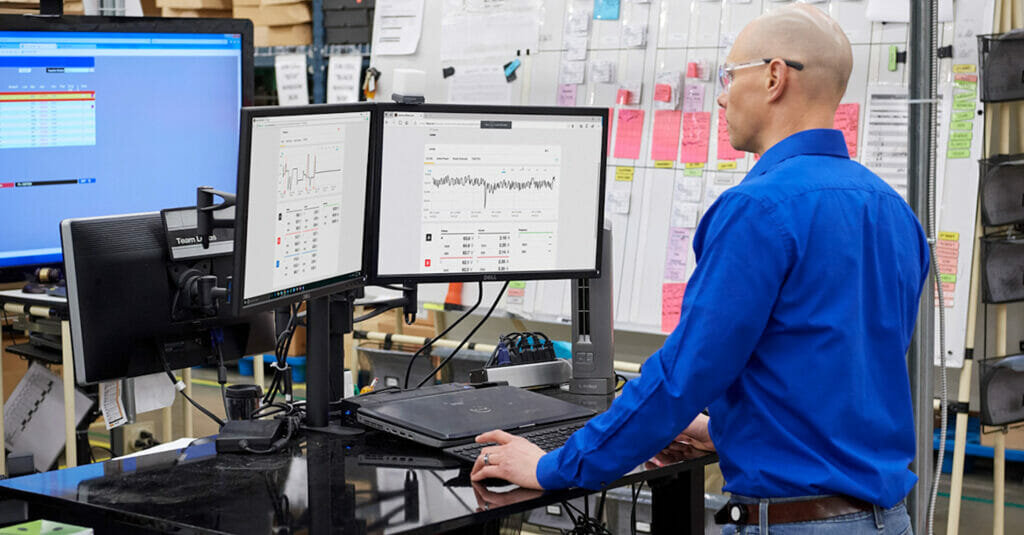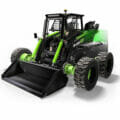Operating across 17 specialised retail distribution warehouses, NEXT’s 700 person team streamlined communication and operations with eMaint mobile CMMS
NEXT, a well known UK-based large fashion and home goods retailer, looked to eMaint to implement much needed standardized and streamlined maintenance operations within their warehouses across the region. Responsible for operating UK-based stores, handing e-commerce for multiple American fashion brands and managing an international operations in more than 500 stores in more than 70 countries, NEXT has some unique maintenance needs.
With 17 warehouses across the UK alone, each specialized for different types of products, it was clear NEXT needed robust mobile CMMS capabilities that worked even offline, because while their technicians work across sprawling warehouses, it’s not practical to build out complete Wi-Fi coverage in every square foot of that space.
Introducing eMaint to solve the key challenge
“Each of our warehouses is slightly different, because each manages different products,” said Matt Winter, Head of Engineering at NEXT. “We do a lot of bedroom furniture out of one particular warehouse. We replenish the retail stores out of another warehouse. We have palletised warehouses, boxed warehouses, hanging garment warehouses. And these are all fully automated.”
NEXT has an engineering department of 700 employees, largely maintenance technicians. All 700 use eMaint, with about 500 mobile CMMS users and 200 desktop users. Before implementing eMaint, the warehouses were essentially run independently. “A lot of maintenance tasks were done just via spreadsheets and and managed locally,” Winter said. “They weren’t sharing experiences between them.”
Additionally, because NEXT’s large distribution centers aren’t designed with complete Wi-Fi coverage in mind, the engineering team needed to be able to work both online and offline without a hitch. Fortunately, with eMaint’s mobile CMMS app, Fluke Mobile, connectivity is not a concern. Technicians can work offline from their tablets, and then the mobile CMMS software will save the updates into eMaint once their connection is restored.
“We find that the mobile CMMS system is very stable because it’s cloud-based,” Winter said. It tends to work quite seamlessly. Our tablets will be going online and offline, and the actual end user who’s got the mobile device in front of them sees very little difference.”

Putting it into practice
Implementation at the first NEXT site began at a time of unique challenges, as pandemic lockdowns and Brexit were unfolding simultaneously. eMaint employees couldn’t travel to guide the implementation in person. Lead times for spare parts and shipping times both increased. Meanwhile, the UK’s departure from the European Union took effect. “Suddenly, we had to deal with who’s importing the goods and exporting the goods, and who’s paying all of those tax burdens, which we’ve never had to deal with previously,” Winter said. “Using eMaint enabled us to streamline and plan for those supply chain delays.”
After overcoming the hurdles facing the first implementation, the remaining rollouts were seamless. NEXT now uses eMaint across 17 sites. Though the eMaint team couldn’t travel to NEXT sites in person for the initial rollout during COVID lockdowns, they were there — remotely — every step of the way.
“It was proper open heart surgery we were performing at that time,” Winter said of the initial implementation.
Reaping the rewards
NEXT tracks multiple KPIs, such as asset uptime, using eMaint. “With eMaint, we can immediately see where the hot spots are,” Winter said. “We refer to it as our top 10 issues. We can immediately see and divert our attention to the top priorities.”
Knowing what’s most pressing helps when it comes to optimising the team’s time. “We log what we’ve referred to as engineer utilisation,” Winter said. “We can see the swing between reactive and proactive work.”
So, in a given week, 25 of an engineer’s 40 working hours should be focused on planned preventive maintenance. “If those 40 hours are made up solely of reactive work, it means we’re not doing any preventive work,” Winter said. “We would then expect to see more downtime. So, of course it means we have got to invest more time, maybe even lay on overtime, in order to get back on track.”
“Using eMaint’s KPI dashboard, we know what we need to achieve operationally on a day-to-day basis,” Winter said. “When something’s going to go wrong on your car, an orange light will appear on your dashboard. For us, the eMaint system is the orange light on the dashboard. It tells us when something needs to be done.”
With all 17 warehouses using eMaint, the team has clearer insights and perspectives into their work. eMaint lets the engineers not only see the part that they play, but also enables them to see the bigger picture.
NEXT has also been able to streamline and improve their inventory management using eMaint. “We can now hold one spare part across several warehouses, whereas before we were holding one spare part in every warehouse because nobody knew what each actually had,” Winter said.
This level of standardisation and centralised communication has brought benefits in other areas as well. For example, NEXT’s engineers are typically scheduled to work several days on, then several days off. When those technicians come back to work, they don’t necessarily know what’s happened over the days that they’ve been off. But by looking at the history in eMaint, they can immediately see what’s happened.
“eMaint has now become the heartbeat of the engineering department within the NEXT business,” Winter said. “It’s the central focus now, the nucleus of what everybody’s working toward. Whereas previously, everybody was sort of trying to do the right thing, but unfortunately pulling in different directions.”








